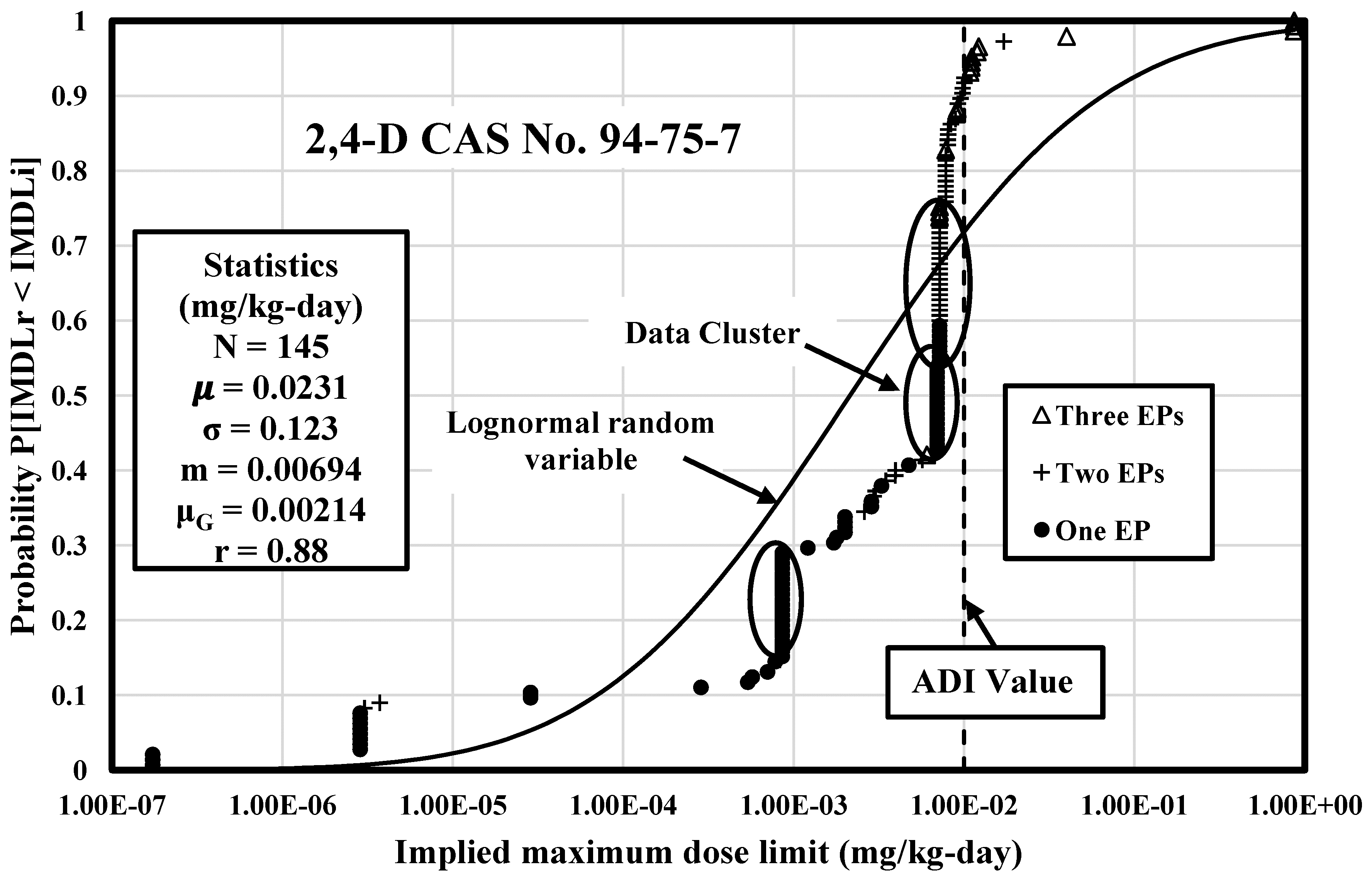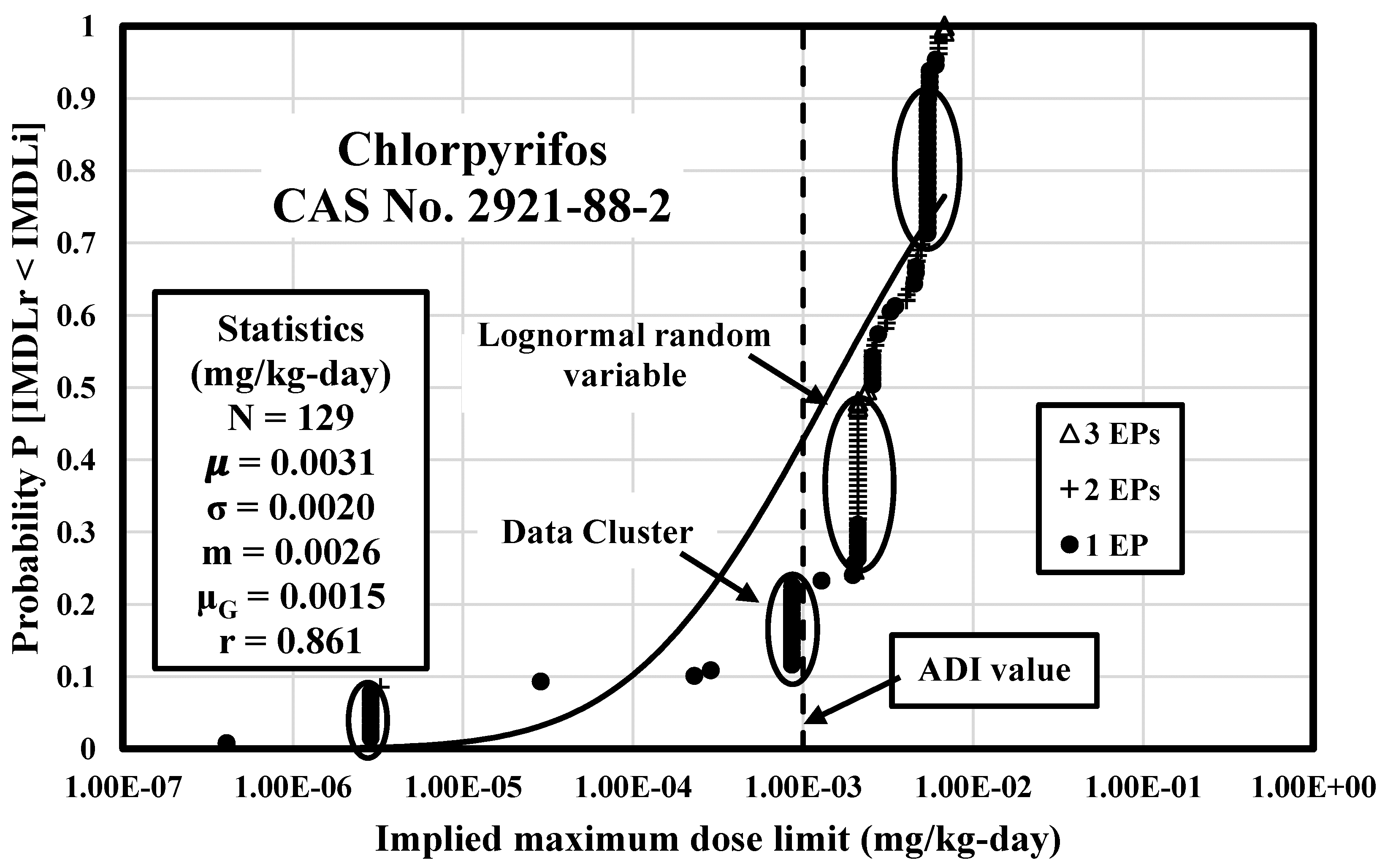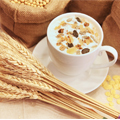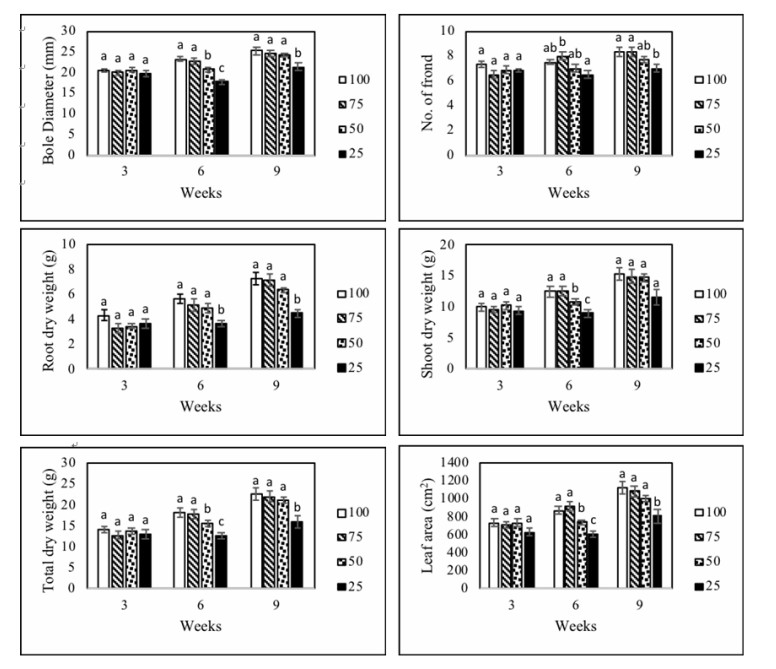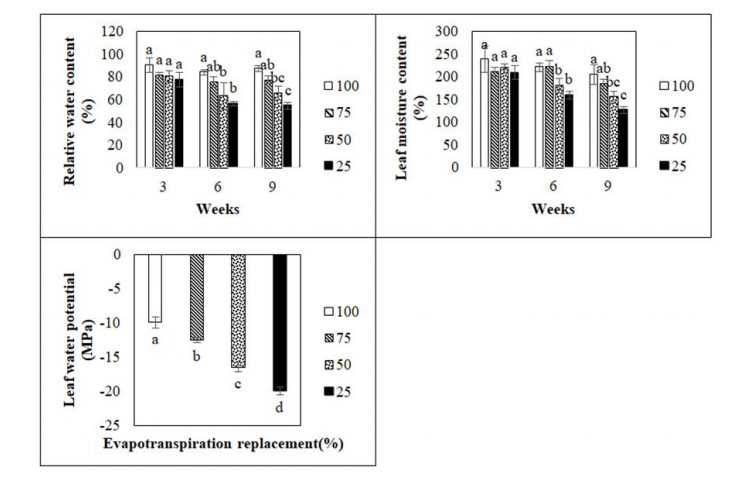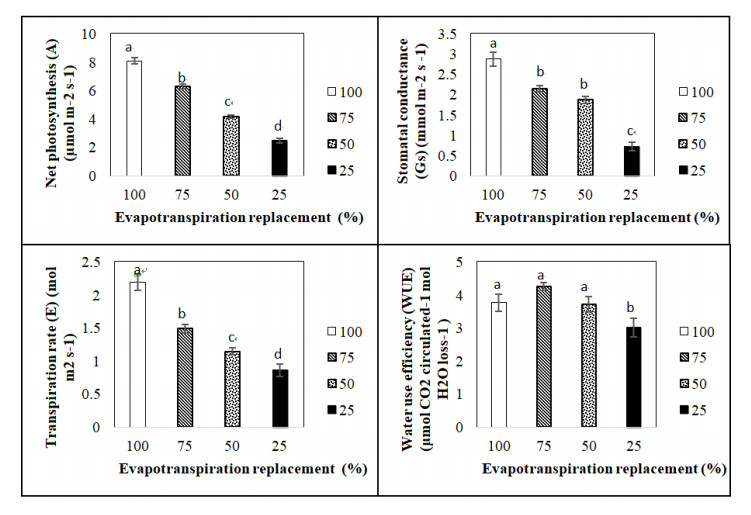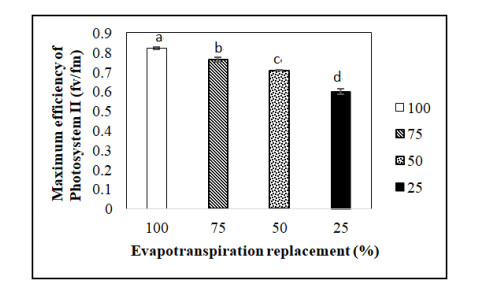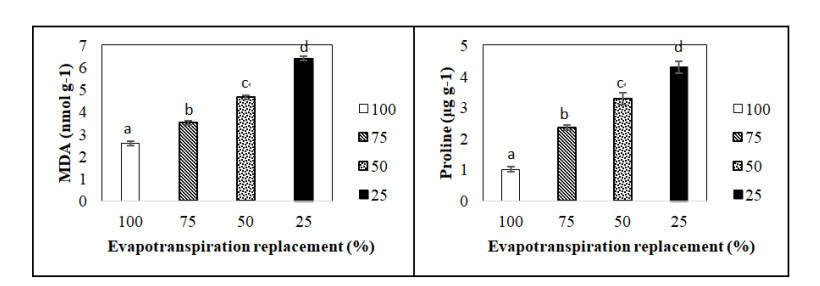1. Introduction
The European Commission [1] defines a pesticide as something that prevents, destroys, or controls a harmful organism (“pest”) or disease, or protects plants or plant products during production, storage, and transport. The U.S. Environmental Protection Agency (USEPA) [2] defines a pesticide as a matter or mixture of matters applied for preventing, destroying, repelling, or mitigating any pest. Pests can be bacteria, microorganisms, plants, and any other species that are harmful to crops, human beings, and living animals. Pesticides are largely applied worldwide to control pests and they can be classified by function (Table 1).
Table 1. Pesticides Classified by Function.
| Pesticide Type |
Function |
Example |
| Algicides |
Kill algae |
Copper sulphate |
| Antifouling agents |
Kill or repel organisms that attach to underwater surfaces |
SEA-NINE CR2 |
| Antimicrobials |
Kill microorganisms (such as bacteria and viruses) |
Sulphonamides |
| Attractants |
Attract pests (to lure an insect or rodent to a trap) |
Heptyl Butyrate |
| Biopesticides |
Derived from natural materials |
Canola oil |
| Biocides |
Kill microorganisms |
Trichlor |
| Disinfectants and sanitizers |
Kill or inactivate disease-producing microorganismss |
Alcohol |
| Fungicides |
Kill fungi |
Mancozeb |
| Fumigants |
Produce gas or vapor intended to destroy pests in buildings or soil |
Methyl bromide |
| Herbicides |
Kill weeds |
2,4-D |
| Insecticides |
Kill insects and other arthropods |
DDT |
| Miticides |
Kill mites |
Permethrin |
| Molluscicides |
Kill snails and slugs |
Methiocarb |
| Nematicides |
Kill nematodes |
Aldicarb |
| Ovicides |
Kill eggs of insects and mites |
Hexythiazox |
| Pheromones |
Disrupt the mating behavior of insects |
Androstenone |
| Repellents |
Repel pests and birds |
Neem oil |
| Rodenticides |
Control mice and other rodents |
Warfarin |
| Defoliants |
Cause leaves or other foliage to drop from a plant |
Drexel |
| Desiccants |
Kill leaves |
Paraquat |
| Insect growth regulators |
Disrupt the molting, maturity from pupal stage to adult, or other life processes of insects |
Triflumuron |
| Plant growth regulators |
Inhibit growth and other plant responses |
Ethephon |
Pesticides are largely used in agricultural, commercial, industrial, home, and garden applications. After applied to the environment, pesticides can be transported to four major environmental sinks which include soil, water, air, and biomass. Pesticides could be absorbed by soil partials and rushed away into river, groundwater, and lake by rain water. Some volatile and semi-volatile pesticides can evaporate into the air and disperse through winds. Moreover, pesticides can bio-accumulate and bio-magnitude into crops, plants, animals, and human beings through food chain [3].
Pesticides are very common in the environment. Human exposure to pesticides can occur through ingestion, inhalation, and dermal contact [4]. The exposure pathways include ingestion of pesticide contaminated food, drinking water, and soil, inhalation of air and soil dust contaminated by pesticides, and dermal contact by swimming and showering in pesticide contaminated water, touching soil and food contaminated by pesticides. Also, infants can exposure to pesticides through ingestion of pesticide contaminated breast milk [5].
Because most pesticides are toxic chemicals, worldwide jurisdictions are taking actions to help manage human health risks caused by pesticides. The actions include regulation of pesticide standard values (PSVs) such as pesticide soil regulatory guidance values (RGVs), pesticide drinking water and air maximum concentration levels (MCLs), and pesticide food maximum residue limits (MRLs). Most jurisdictions regulated PSVs to specify their maximum allowable concentrations in each exposure pathway. PSVs should be regulated and derived based on human health risk model and applied essential toxicological data like acceptable daily intake (ADI) which is the maximum amount of pesticide that can enter human body without adverse health effects. Previous researches have made contributions on regulating worldwide contamination chemical standards. Proctor et al. [6] conducted research on Chromium standard values regarding human health. Davis et al. [7] analyzed Arsenic soil standards. Also, other studies analyzed pesticide standards in soil and drinking water [8-13]. Since human exposure to pesticides may occur by many different exposure pathways, it is necessary to examine PSVs in a more comprehensive approach and consider all the major exposures. Therefore, the objective of this study is to evaluate whether PSVs could protect human health based on all major exposures.
2. Materials
2.1. Worldwide Jurisdictions and PSVs
The materials needed for this research are worldwide jurisdictions and their PSVs, which include pesticide soil RGVs, pesticide drinking water MCLs, pesticides air MCLs, and pesticide agricultural commodity MRLs. These jurisdictions and PSVs were mainly obtained from online data base. Most governments and environmental departments provided the documents on their official websites. Some materials are collected from other sources such as publication journals, environmental conferences, or news reports. Pesticides from worldwide jurisdictions were identified by Chemical Abstracts Service Registry Numbers (CAS No.). A total of 19,421 soil pesticide RGVs from 174 worldwide soil jurisdictions in 50 nations were identified. Also, a total of 5,474 drinking water pesticide MCLs from 145 worldwide jurisdictions in 95 nations were identified. There are at least 90 worldwide jurisdictions provided agricultural commodity pesticide MRLs. Because only the U.S. regulated pesticide air MCLs, the analysis of air PSVs is omitted. These PSVs references and sources were provided in Supplementary Materials.
2.2. The Most Commonly Used Pesticides
Based on current and historical usage, a total of 25 pesticides have been selected for IMDL analysis (Table 2). Among these 25 selected pesticides, a total of 11 are Stockholm Convention Persistent Organic Pollutants (POPs) pesticides which were largely applied historically [14-16] and the rest are widely used nowadays [17].
Table 2. 25 Selected Pesticides Based on Current and Historical Use.
| Pesticide |
CAS No. |
Reason for selection |
| Aldrin |
309-00-2 |
The Stockholm Convention POP |
| Chlordane |
57-74-9 |
The Stockholm Convention POP |
| DDT |
50-29-3 |
The Stockholm Convention POP |
| Dieldrin |
60-57-1 |
The Stockholm Convention POP |
| Endrin |
72-20-8 |
The Stockholm Convention POP |
| Heptachlor |
76-44-8 |
The Stockholm Convention POP |
| Toxaphene |
8001-35-2 |
The Stockholm Convention POP |
| Lindane |
58-89-9 |
The Stockholm Convention POP |
| Endosulfan |
115-29-7 |
The Stockholm Convention POP |
| Pentachlorophenol |
87-86-5 |
The Stockholm Convention POP |
| Bromomethane |
74-83-9 |
The Stockholm Convention POP |
| Glyphosate |
1071-83-6 |
Current high quantity use |
| Mancozeb |
8018-01-7 |
Current high quantity use |
| Chlorothalonil |
1897-45-6 |
Current high quantity use |
| 2,4-D |
94-75-7 |
Current high quantity use |
| Chlorpyriphos |
2921-88-2 |
Current high quantity use |
| Atrazine |
1912-24-9 |
Current high quantity use |
| MCPA |
94-74-6 |
Current high quantity use |
| Dicamba |
1918-00-9 |
Current high quantity use |
| Metolachlor |
51218-45-2 |
Current high quantity use |
| Aldicarb |
116-06-3 |
Current high quantity use |
| Malathion |
121-75-5 |
Current high quantity use |
| Diazinon |
333-41-5 |
Current high quantity use |
| Trifluralin |
1582-09-8 |
Current high quantity use |
| Diuron |
330-54-1 |
Current high quantity use |
3. Methods
3.1. Implied Maximum Dose Limit
IMDL was introduced in this research to examine the pesticide maximum exposure mass loading based on national jurisdictions PSVs from all major exposure pathways. Pesticide implied dose limits (IDLs) were calculated for each exposure pathway as the following, and because only U.S. regulated pesticide air MCLs, the IDLair calculation was omitted.
For drinking water:
For residential soil:
| IDLsoll=(EFHW)[(RGV)(CF)(IR)+(RGV)(CF)(ABSd)(GIABS)] |
(2) |
For agricultural commodities:
| IDLfood=(EFHW)∑ni=1(MRLi)(IRi) |
(3) |
All IDLs are based on the following set of exposure scenario coefficient values.
EF - Exposure Factor (1) [18];
HW - Human Weight (70 kg) [18];
V - Volume of water intake rate (2 L/day) [18];
CF - Convert Factor (106 mg/kg);
IR - Intake Rate for soil [19];
ABSd - Absorption Factor [19];
GIABS - GastroIntestinal Absorption Factor [19];
IRi - Intake Rate for food i (kg/day) [20].
And IMDL was derived by adding up IDLs from these possible exposures. If a nation regulated more than one PSVs in one of the major exposures, different IMDLs were calculated by combining different IDL with others.
| IMDL=(EFHW)[(MCL)(V)+(RGV)(CF)(IR)+(RGV)(CF)(ABSd)(GIABS)+∑ni=1(MRLi)(IRi)] |
(4) |
3.2. Cumulative Distribution Function (CDF) Analysis
The arithmetic mean (&mgr;), median (m), standard deviation (&sgr;L), and geometric mean (&mgr;G) were computed for those selected pesticides IMDLs. CDF analysis was applied to illustrate the distribution of IMDLs. IMDL empirical cumulative distribution for each pesticide was shown as follows.
| P(IMDLr≤IMDLi)≈niN; ∀i=1,…,N |
(5) |
IMDLr - a random IMDL;
IMDLi - a known IMDL;
ni - integer rank of IMDL in N known values.
3.3. Pearson (r) Correlation Coefficient
Pearson (r) correlation coefficient was calculated in Equation 5 for each selected pesticide IMDL to measure the degree that an IMDL empirical cumulative distribution fits a theoretical lognormal cumulative distribution calibrated with the computed mean and standard deviation statistics.
| r=N[∑E(IMDLi)×F(IMDLi)]−[∑E(IMDLi)][∑F(IMDLi)]√[N∑E(IMDLi)2−(∑E(IMDLi))2][N∑F(IMDLi)2−(∑F(IMDLi))2] |
(6) |
E (IMDLi) - probability calculated from IMDL empirical cumulative distribution;
F (IMDLi) - probability calculated from IMDL theoretical lognormal cumulative distribution.
3.4. IMDL Cluster
CDF analysis was also applied to find IMDL clusters. IMDL cluster is defined as IMDL interval (IMDLi − IMDLi+M) with M non-random values. Binomial probability function expressed in Equation 7 was used to compute the randomly occurring cluster probability (Pc).
| Pc[M IMDLsϵ(IMDLi,IMDLi+M]=[N!M!(N−M)!][F(IMDLi+M)−F(IMDLi)]M{1−[F(IMDLi+M)−F(IMDLi)]}N−M |
(7) |
4. Results
The IMDLs for 25 selected pesticides were analyzed by CDF and compared with the acceptable daily intake (ADI) value which measures the maximum amount of pesticide which can get into the human body without occurring adverse health effects. IMDLs for three pesticides 2,4-D, Chlorpyrifos, and Diazinon were discussed in this study.
4.1. 2,4-D IMDL Analysis
Figure 1 illustrates the CDF of 145 IMDLs calculated from 2,4-D major exposures and compared with a theoretical lognormal CDF calibrated with the computed mean and standard deviation statistics. The IMDLs of 2,4-D range from 1.73 E-07 (Moldova) to 8.66 E-01 mg/kg-day (Vietnam) with 6.70 orders of magnitude. The Pearson correlation coefficient is 0.881, indicating that values are well dispersed over this span. The CDF is skewed by three IMDLs clusters.
The cluster at 7.18 E-03 - 7.81 E-03 mg/kg-day is made up of 33 IMDLs computed from Cambodia, China, Costa Rica, Cuba, Dominican Republic, Honduras, Egypt, Guatemala, Nicaragua, Pakistan, Peru, Philippines, Venezuela, Austria, Cyprus, Denmark, European Union (EU), Finland, France, Germany, Greece, Ireland, Italy, Malta, Morocco, Netherlands, Norway, Poland, Portugal, Slovenia, Spain, Sweden, and Thailand. The cluster at 6.95 E-03 mg/kg-day is made up of 17 IMDLs computed from Algeria, Angola, Bangladesh, Barbados, Bermuda, Belgium, Bulgaria, Estonia, Hong Kong, French West Indies, Iceland, Latvia, Luxembourg, Romania, Switzerland, United Arab Emirates, and Ukraine. The cluster at 8.57 E-04 mg/kg-day is made up of 21 IMDLs computed from Argentina, Tanzania, Albania, Antigua and Barbuda, Belize, Bhutan, Fiji, India, Kazakhstan, Kiribati, Kuwait, Labia, Nauru, Russia, Rwanda, St. Lucia, Syrian Arab, Tonga, Tuvalu, Uganda, and U.S..
Only four 2,4-D IMDLs are above the arithmetic mean (2.31 E-02 mg/kg-day) because it is skewed by some extreme values such as 8.66 E-01 mg/kg-day at the high end of the distribution. On the other hand, the median and geometric mean (6.94 E-03 and 2.14 E-03 mg/kg-day respectively) are better measures of vales central tendency. Table 3 provides the statistics summary of 2,4-D IMDLs.
There are 13 (9.0% of the total) 2,4-D IMDLs exceeding the 2,4-D ADI which is equal to 0.01 mg/kg-day [21]. Although the rest of IMDLs seem appropriate, it is hard to suggest that many worldwide jurisdictions have provided appropriate 2,4-D PSVs because only jurisdictions from Mexico, Honduras, Pakistan, Peru, and Philippines regulated 2,4-D PSVs in soil, water, and agricultural commodity.
Table 3. 2,4-D IMDLs Statistic Summary.
| Total exposures |
Three exposures |
Two exposures |
One exposure |
| Number of IMDLs |
145 |
17 |
53 |
75 |
| µ (mg/kg-day) |
2.31E-02 |
1.12E-01 |
2.31E-02 |
3.07E-03 |
| µG (mg/kg-day) |
2.14E-03 |
1.65E-02 |
5.37E-03 |
7.04E-04 |
| µL |
−2.67E+00 |
−1.78E+00 |
−2.27E+00 |
−3.15E+00 |
| &sgr;L |
1.16E+00 |
6.73E-01 |
7.40E-01 |
1.26E+00 |
| &sgr; (mg/kg-day) |
1.23E-01 |
2.83E-01 |
1.18E-01 |
3.03E-03 |
| Max IMDL (mg/kg-day) |
8.66E-01 |
8.64E-01 |
8.66E-01 |
8.06E-03 |
| Min IMDL (mg/kg-day) |
1.73E-07 |
5.69E-03 |
3.03E-06 |
1.73E-07 |
| Orders of magnitude variation |
6.70E+00 |
2.18E+00 |
5.46E+00 |
4.67E+00 |
| m (mg/kg-day) |
6.95E-03 |
1.08E-02 |
7.18E-03 |
8.57E-04 |
4.2. Chlorpyrifos IMDL Analysis
Figure 2 illustrates the CDF of 129 IMDLs calculated from Chlorpyrifos major exposures and compared with a theoretical lognormal CDF calibrated with the computed mean and standard deviation statistics. The IMDLs of Chlorpyrifos range from 4.06 E-07 (Moldova) to 6.77 E-03 mg/kg-day (New Zealand) with 4.22 orders of magnitude. The Pearson correlation coefficient is 0.861, which suggests values are well dispersed over this span. The CDF is skewed by four IMDLs clusters.
The cluster at 2.86E-06 mg/kg-day is made up of 9 IMDLs from Andorra, Bolivia, Bulgaria, Estonia, Gambia, Labia, Liechtenstein, Ukraine, and Vanuatu. The cluster at 8.57 E-04 mg/kg-day is made up of 14 IMDLs from Antigua and Barbuda, Belize, Bhutan, Fiji, Labia, Kiribati, Kuwait, Nauru, Qatar, Tonga, Tuvalu, Uganda, and St. Lucia. The cluster at 2.09 E-03 - 2.10 E-03 mg/kg-day is made up of 29 IMDLs from Austria, Belgium, Bulgaria, French West Indies, Cyprus, Czech Republic, Denmark, EU, Finland, France, Germany, Greece, Iceland, Latvia, Luxembourg, Ireland, Italy, Malta, Netherlands, Norway, Poland, Portugal, Romania, Slovenia, Slovakia, Spain, and United Kingdom. The cluster at 5.38 E-03 - 5.42 E-03 mg/kg-day is made up of 26 IMDLs from Algeria, Angola, Bangladesh, Barbados, Bermuda, Cambodia, Colombia, Costa Rica, Cuba, Dominican Republic, Honduras, El Salvador, Guatemala, Jamaica, Jordan, Kenya, Lebanon, Netherlands Antilles, Nicaragua, Pakistan, Panama, Philippines, Saudi Arabia, Trinidad and Tobago, Tunisia, and Venezuela.
There are 100 (77.5% of the total) Chlorpyrifos IMDLs above the ADI which is 0.001 mg/kg-day [22], which suggests that Chlorpyrifos PSVs from most worldwide jurisdiction can hardly protect human health. For the rest of Chlorpyrifos IMDLs which are below the ADI, none of them account for all major pesticide exposures. Among the 129 Chlorpyrifos IMDLs, only seven of them were computed from three exposures. Table 4 provides the statistics summary of Chlorpyrifos IMDLs.
Table 4. Chlorpyrifos IMDLs Statistic Summary.
| Total exposures |
Three exposures |
Two exposures |
One exposure |
| Number of IMDLs |
129 |
7 |
41 |
81 |
| µ (mg/kg-day) |
3.07E-03 |
3.48E-03 |
3.19E-03 |
2.97E-03 |
| µG (mg/kg-day) |
1.47E-03 |
3.00E-03 |
2.53E-03 |
1.05E-03 |
| µL |
−2.83E+00 |
−2.52E+00 |
−2.60E+00 |
−2.98E+00 |
| &sgr;L |
9.21E-01 |
2.42E-01 |
4.96E-01 |
1.08E+00 |
| &sgr; (mg/kg-day) |
2.01E-03 |
2.24E-03 |
1.55E-03 |
2.20E-03 |
| Max IMDL (mg/kg-day) |
6.77E-03 |
6.77E-03 |
6.24E-03 |
6.01E-03 |
| Min IMDL (mg/kg-day) |
4.06E-07 |
2.00E-03 |
3.26E-06 |
4.06E-07 |
| Orders of magnitude variation |
4.22E+00 |
5.29E-01 |
3.28E+00 |
4.17E+00 |
| m (mg/kg-day) |
2.55E-03 |
2.30E-03 |
2.10E-03 |
2.55E-03 |
4.3. Diazinon IMDL Analysis
Figure 3 illustrates the CDF of 108 IMDLs calculated from Diazinon major exposures and compared with a theoretical lognormal CDF calibrated with the computed mean and standard deviation statistics. The IMDLs of Diazinon range from 1.43 E-07 (Iraq) to 8.90 E-03 mg/kg-day (Russia) with 4.79 orders of magnitude. The Pearson correlation coefficient is 0.947, which suggests values are well dispersed over this span. The CDF is skewed by four IMDLs clusters.
The data cluster at 2.86 E-06 mg/kg-day is made up of 8 IMDLs from Andorra, Bolivia, Bulgaria, Estonia, Labia, Liechtenstein, Ukraine, and Vanuatu. The cluster at 3.58 E-05 mg/kg-day is made up of 18 IMDLs from the Austria, Cyprus, Czech Republic, Denmark, EU, France, Germany, Greek, Ireland, Italy, Lithuania, Malta, Netherlands, Poland, Portugal, Slovenia, Sweden, and Switzerland. The cluster at 2.59 E-04 - 2.63 E-04 mg/kg-day is made up of 32 IMDLs from Algeria, Angola, Bangladesh, Barbados, Cambodia, China, Chile, Costa Rica, Egypt, Ecuador, El Salvador, Guatemala, Jamaica, Jordan, Kenya, Lebanon, Morocco, Netherlands Antilles, Nicaragua, Pakistan, Panama, Peru, Philippines, South Africa, Thailand, Trinidad and Tobago, Tunisia, United Arab Emirates, Venezuela, Vietnam, and WHO. The cluster at 9.84 E-04 - 1.11 E-03 mg/kg-day is made up of 11 IMDLs from Bahrain, Brunei, Hong Kong, South Korea, New Zealand, Kuwait, Oman, Qatar, Saudi Arabia, and Singapore.
Only 22 Diazinon IMDLs are above the arithmetic mean which is 4.26 E-04 mg/kg-day because it is skewed by some extreme values such as 8.90 E-03 mg/kg-day at the high end of the distribution. The median and geometric mean (2.59 E-04 and 1.11 E-04 mg/kg-day, respectively) are probably better measures of vales central tendency. Among the 108 Diazinon IMDLs, only two of them were computed from three exposures. Table 5 provides statistics summary of Diazinon IMDLs.
Table 5. Diazinon IMDLs Statistic Summary.
| Total exposures |
Three exposures |
Two exposures |
One exposure |
| Number of IMDLs |
108 |
2 |
39 |
67 |
| µ (mg/kg-day) |
4.26E-04 |
3.68E-05 |
6.75E-04 |
2.93E-04 |
| µG (mg/kg-day) |
1.11E-04 |
3.68E-05 |
1.34E-04 |
1.02E-04 |
| µL |
−3.96E+00 |
−4.43E+00 |
−3.87E+00 |
−3.99E+00 |
| &sgr;L |
8.90E-01 |
1.68E-02 |
7.97E-01 |
9.51E-01 |
| &sgr; (mg/kg-day) |
9.69E-04 |
1.42E-06 |
1.54E-03 |
3.02E-04 |
| Max IMDL (mg/kg-day) |
8.90E-03 |
3.78E-05 |
8.90E-03 |
1.10E-03 |
| Min IMDL (mg/kg-day) |
1.43E-07 |
3.58E-05 |
3.06E-06 |
1.43E-07 |
| Orders of magnitude variation |
4.79E+00 |
2.38E-02 |
3.46E+00 |
3.89E+00 |
| m (mg/kg-day) |
2.59E-04 |
3.68E-05 |
3.58E-05 |
2.59E-04 |
There are 20 (18.5% of the total) Diazinon IMDLs above the ADI which is 0.002 mg/kg-day [23] indicating that these Diazinon PSVs from worldwide jurisdiction can hardly protect human health. For the rest of Diazinon IMDLs which are below the ADI, only jurisdictions from Slovakia and the Czech Republic regulated Diazinon PSVs in major exposures.
5. Summary and Conclusions
Table 6 provides statistics information for these selected pesticides (Bromomethane and Toxaphene were omitted due to few jurisdictions regulated PSVs for them). Vietnam contributes ten maximum IMDLs not only because Vietnam provided PSVs in three major exposures but also Vietnam regulated relatively large pesticide drinking water MCLs. Russia and Croatia contribute three maximum IMDLs. For most nations with minimum IMDLs, they only regulated PSVs in one exposure pathway. For example, Moldova contributes four minimum IMDLs which computed from soil RGVs, and Iraq contributes three minimum IMDLs computed from drinking water MCLs only.
The weighted average Pearson correlation coefficient of selected pesticides IMDLs is 0.926. For some pesticides such as Dieldrin, the correlation coefficient is 0.981. The weighted average order of variance of IMDLs is 6.09. Endosulfan IMDL values have the largest span of 8.29 order of magnitude. It suggests that in general, the IMDLs of selected pesticides are well dispersed over data spans, and worldwide jurisdictions lack the agreement on PSVs regulations in major exposures.
Only 105 IMDLs (4% of the total number of the selected pesticides) were computed from three major exposures. Most worldwide jurisdictions regulated selected pesticides in either two exposures or one exposure. As those are largely used pesticides and they can move and be transported to the soil, water, air, and biomass. It is necessary for worldwide jurisdictions to regulate PSVs in all major exposures. Glyphosate is top used pesticides over the world, however, only four Glyphosate IMDLs were computed from PSVs in soil, water, and agricultural commodity. Although the use of DDT has been banned, it can still be detected in soil, water, and food because of the wide application in the past.
There are 100 Chlorpyrifos IMDLs (77.5% of the total) above the ADI, however, only seven IMDLs were computed from major exposures, indicating that jurisdictions haven't provide safe Chlorpyrifos standard values even in one of the major exposure pathways. Although all IMDLs of Endosulfan are below the ADI value, none of them account for all major human exposures. Above all, it suggests that PSVs in all major exposure pathways should be regulated and comprehensive regulations of PSVs are necessary from human health point of view.
Table 6. Statistic Summary for Selected Pesticides.
| Pesticide |
CAS No. |
Pearson correlation coefficient |
Log orders of variance |
Max IMDL (mg/kg-day) |
Min IMDL (mg/kg-day) |
Total number of IMDLs |
Number of IMDLs computed from three exposures |
Number of IMDLs above ADI |
| 2,4-D |
94-75-7 |
0.881 |
6.70 |
8.66 E-01, Viet Nam |
1.73 E-07, Armenia * |
145 |
17 |
13 (9.0%) |
| Aldicarb |
116-06-3 |
0.977 |
5.00 |
2.86 E-01, Viet Nam |
2.86 E-06, Andorra * |
121 |
5 |
3 (2.5%) |
| Aldrin |
309-00-2 |
0.824 |
5.15 |
2.86 E-03, Croatia |
2.03 E-08, Italy |
147 |
0 |
22 (9.0%) |
| Atrazine |
1912-24-9 |
0.917 |
6.75 |
5.70 E-02, Viet Nam |
1.02 E-08, Ecuador |
125 |
22 |
2 (1.6%) |
| Chlordane |
57-74-9 |
0.923 |
8.06 |
5.71 E-03, Viet Nam * |
5.01 E-11, Serbia |
131 |
5 |
9 (6.9%) |
| Chlorothalonil |
1897-45-6 |
0.925 |
3.51 |
9.22 E-03, Australia |
2.86 E-06, Andorra * |
105 |
2 |
0 (0.0%) |
| Chlorpyriphos |
2921-88-2 |
0.861 |
4.22 |
6.77 E-03, New Zealand |
4.06 E-07, Moldova |
129 |
7 |
100 (77.5%) |
| DDT |
50-29-3 |
0.979 |
6.55 |
5.71 E-02, Viet Nam |
1.62 E-08, Montenegro |
161 |
0 |
25 (15.5%) |
| Diazinon |
333-41-5 |
0.947 |
4.79 |
8.90 E-03, Russia |
1.43 E-07, Iraq |
108 |
2 |
20 (18.5%) |
| Dicamba |
1918-00-9 |
0.713 |
4.34 |
1.10 E-02, Russia |
5.08 E-07, Uzbekistan |
105 |
2 |
0 (0.0%) |
| Dieldrin |
60-57-1 |
0.981 |
5.15 |
2.86 E-03, Croatia |
2.03 E-08, Italy |
140 |
0 |
20 (14.2%) |
| Diuron |
330-54-1 |
0.946 |
4.45 |
2.86 E-02, Russia |
1.02 E-06, Moldova * |
75 |
2 |
11 (11.4%) |
| Endosulfan |
115-29-7 |
0.941 |
8.29 |
3.94 E-03, Argentina |
2.03 E-11, Serbia * |
76 |
0 |
0 (0.0%) |
| Endrin |
72-20-8 |
0.915 |
7.55 |
2.87 E-03, Hungary |
8.13 E-11, Serbia |
102 |
0 |
6 (5.9%) |
| Glyphosate |
1071-83-6 |
0.854 |
6.11 |
1.86 E-01, Guatemala |
1.43 E-07, Iraq |
115 |
4 |
42 (27.1%) |
| Heptachlor |
76-44-8 |
0.981 |
6.30 |
2.86 E-03, Croatia |
1.42 E-09, Singapore |
113 |
8 |
18 (15.9%) |
| Lindane |
58-89-9 |
0.969 |
7.53 |
5.71 E-02, Viet Nam |
1.67 E-09, Bulgaria |
153 |
4 |
14 (9.2%) |
| Malathion |
121-75-5 |
0.688 |
5.91 |
1.17 E-01, Viet Nam |
1.43 E-07, Iraq |
111 |
2 |
94 (84.7%) |
| Mancozeb |
8081-01-7 |
0.719 |
5.11 |
2.63 E-02, U.S. |
2.03 E-07, Belarus * |
105 |
2 |
0 (0.0%) |
| MCPA |
94-74-6 |
0.917 |
5.85 |
5.78 E-02, Viet Nam |
8.13 E-08, Belarus |
126 |
12 |
39 (69.0%) |
| Metolachlor |
51218-45-2 |
0.921 |
5.78 |
2.44 E-02, Bahamas |
4.06 E-08, Georgia |
77 |
3 |
0 (0.0%) |
| Pentachlorophenol |
87-86-5 |
0.970 |
5.94 |
2.57 E-01, Viet Nam |
2.94 E-07, Moldova |
130 |
4 |
2 (1.5%) |
| Trifluralin |
1582-09-8 |
0.897 |
6.45 |
5.71 E-01, Viet Nam |
2.03 E-07, Moldova |
98 |
2 |
1 (1.0%) |
| * The values are also shared by other nation. |
Acknowledgements
The authors would like to appreciate the contributions from other scholars who provided help and suggestion to this research: Xiong Yu, Xiangwu Zeng, Kurt R. Rhoads, and Jenný Brynjarsdóttir.
Conflict of Interest
All authors declare no conflicts of interest in this paper.









 DownLoad:
DownLoad: 